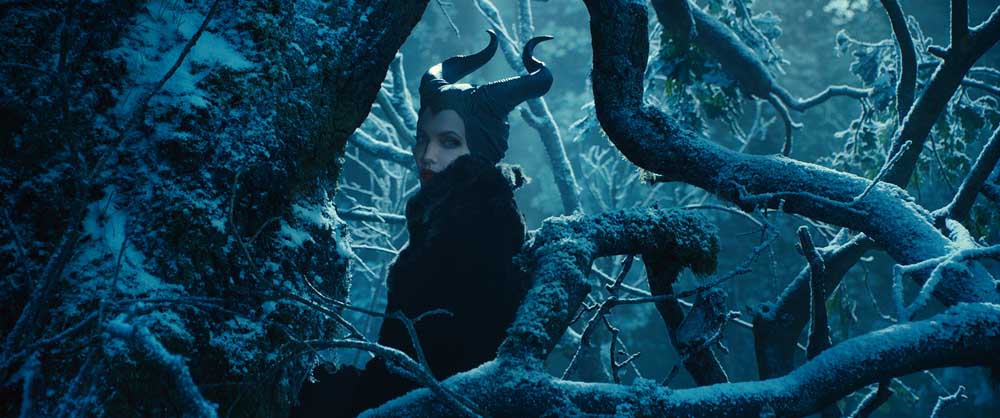What a magnificent mess
Published 12:00 am Friday, May 30, 2014

- Disneys "MALEFICENT"Maleficent (Angelina Jolie)Photo Credit: Film Frame©Disney 2014
Sometimes it’s best to let Sleeping Beauty lie.
“Maleficent” is an admittedly great-looking, sometimes creepy, often plodding and utterly unconvincing re-imagining of a famous romantic fairy tale as a female empowerment metaphor.
It’s a mess is what it is.
Not that the ingredients are without merit. It’s easy to understand how the basic concept would have worked like a charm (a spell!) in pitch meetings, and why Angelina Jolie was drawn to the project — but the end result is borderline disastrous. “Maleficent” seems too dark and ambiguous to appeal to young girls, too silly for tweens and neither sly nor ambitious enough to attract an older audience.
From the Snow Queen in “Frozen” to the witches in “Wicked” and “Oz the Great and Powerful,” characters once presented as pure evil are now getting their own origin stories. So it is with “Maleficent,” where the villain from the 1959 Disney classic (based on a story that goes back at least to the 17th century), gets to tell her side of the story.
All of it reminds me of Jessica Rabbit’s classic line from “Who Framed Roger Rabbit” — “I’m not bad. I’m just drawn that way.”
Director Robert Stromberg and screenwriter Linda Woolverton (and the obligatory team of skilled special effects artists that create beautiful visuals while once again failing to make 3-D look 3-D) take us back to Maleficent’s days as a carefree imp, flitting through the magical land of the moors, where fairies and trolls and other amazing CGI creatures have not a care in their world — until the day a young human named Stefan breaches their walls.
Damn those humans! They never respect the boundaries of other cultures in their quest for treasure.
Maleficent and Stefan strike up a friendship that turns to romance when they reach their teens. But because Stefan is a weak, greedy, power-hungry man, he betrays Maleficent — and that’s when all hell breaks loose.
By the time Maleficent unleashes a quite detailed and unintentionally hilarious curse upon the infant Aurora (daughter of King Stefan), decreeing the girl will eventually fall into a permanent sleep to be broken only by “true love’s kiss,” it almost seems like an act of mercy, given what Maleficent has been through.
The many weaknesses in “Maleficent” are exposed during the extended second act after the spell has been cast.
Let’s start with the fairies entrusted with the care of Aurora from her birth to her 16th birthday. The faces of Imelda Staunton, Juno Temple and Lesley Manville are superimposed onto the tiny flitting bodies of these fairies, and the result is nightmare-inducing. The talking babies in commercials are less disturbing.
Every time these characters appear, doing their Three Stooges-style comic relief, it’s as if they’re doing an advertisement for “Maleficent” winning a Razzie. How could anyone look at that footage and think it was a good idea to share with the world?
Another major problem: Sharlto Copley as the grown-up Stefan.
Copley has been wonderful in other roles, but he’s horrible here, playing the king as a sniveling, delusional fool. It’s Overacting 101. Why would the wise and powerful Maleficent spend six seconds pining over this idiot?
In the meantime, the supposedly tormented Maleficent has perfect makeup, CGI-enhanced cheekbones, an endless wardrobe, the adoration of all in her kingdom and some amazing super-powers.
Scene by scene, “Maleficent” drains all the drama and tension and romance from the story, in favor of hitting us over the head with teaching moments about how women have to look after one another because men are either power-hungry jerks or empty-headed pretty boys. (I know: If we get another thousand films with that message, it still won’t level the cinematic history playing field. But that shouldn’t be the point of a movie.)
Jolie looks great, but she delivers a one-note performance. Once in a while, Jolie’s eyes convey genuine emotion, but the rest of the time she’s just doing that “I WILL TALK IN A PSEUDO-ENGLISH ACCENT!” thing that is the hallmark of phoning it in. Not for a second did I believe her anguish or her moments of pure love.
Elle Fanning’s Aurora is a chipper bore. Awake Beauty is only slightly more interesting than Sleeping Beauty.
At times the visuals in “Maleficent” will blow you away. The story itself might well put you into the same time of semi-coma that befalls the heroine.
— Richard Roeper is a film critic for The Chicago Sun-Times.






